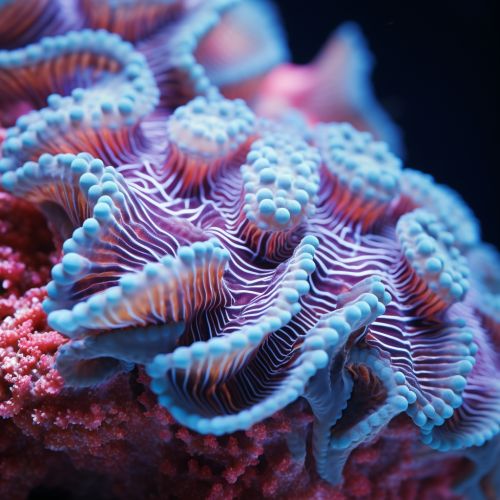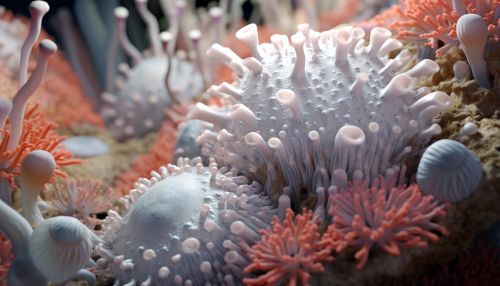Biomineralization Processes in Marine Organisms
Introduction
Biomineralization is a naturally occurring process in many marine organisms that involves the precipitation of minerals in an organized manner within or around their cells. This process is responsible for the formation of various biological structures such as shells, coral skeletons, and fish scales. Biomineralization is a complex process that involves a variety of biological, chemical, and physical interactions.


Biological Aspects of Biomineralization
Biomineralization in marine organisms is a biologically controlled process. It involves the secretion of organic molecules, such as proteins and polysaccharides, which serve as a template for mineral deposition. These organic molecules are secreted by specialized cells known as sclerocytes in corals and mantle cells in molluscs. The organic molecules form a matrix that guides the deposition of minerals, ensuring that the biomineralized structure forms in the correct shape and size.
Chemical Aspects of Biomineralization
The chemical aspects of biomineralization involve the precipitation of minerals from the surrounding environment. The most common minerals involved in biomineralization in marine organisms are calcium carbonate and silica. The precipitation of these minerals is influenced by various factors, including the concentration of ions in the surrounding water, the pH, and the presence of organic molecules. The organic molecules secreted by the organism can bind to specific ions, promoting their precipitation and incorporation into the biomineralized structure.
Physical Aspects of Biomineralization
The physical aspects of biomineralization involve the arrangement and organization of the precipitated minerals. The organic matrix secreted by the organism provides a template for the minerals, guiding their deposition in a highly organized manner. This results in the formation of biomineralized structures with complex shapes and intricate patterns. The physical properties of these structures, such as their hardness, toughness, and optical properties, are determined by the arrangement and organization of the minerals.
Role of Biomineralization in Marine Organisms
Biomineralization plays a crucial role in the survival and success of many marine organisms. The biomineralized structures formed through this process serve various functions, including protection, support, feeding, and sensing the environment. For example, the shells of molluscs and the skeletons of corals provide protection and support, while the silica spicules of sponges are used for feeding and sensing the environment. Furthermore, biomineralization plays a key role in the adaptation of marine organisms to their environment, as the properties of the biomineralized structures can be modified in response to environmental changes.
Biomineralization and Climate Change
Biomineralization in marine organisms is sensitive to changes in the environment, including changes associated with climate change. Rising ocean temperatures and ocean acidification, both consequences of climate change, can affect the biomineralization process. For example, ocean acidification can reduce the availability of carbonate ions, which are essential for the formation of calcium carbonate structures in organisms like corals and molluscs. This can lead to weaker shells and skeletons, making these organisms more vulnerable to predation and environmental stress.
Conclusion
Biomineralization is a complex and fascinating process that plays a crucial role in the biology and ecology of many marine organisms. It involves a combination of biological, chemical, and physical interactions, resulting in the formation of diverse and intricate biomineralized structures. Understanding the process of biomineralization and its sensitivity to environmental changes is important for predicting the impacts of climate change on marine ecosystems and for developing strategies to protect and conserve these vital ecosystems.
